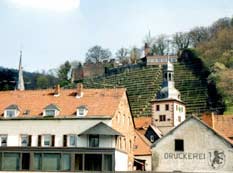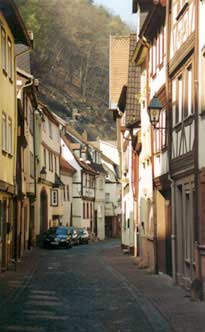|
|
 |
 |
|
|
|
|
|
|
 Klingenberg Klingenberg
Museum of Viticulture and Exhibition Mine
|
|
|
|
|
|
|
|
Cultivation of vines in the vineyard, grape harvest, pressing, storing techniques and bottling of the new wine are presented on the ground floor of the museum. A considerably collection of glasses and bottles as well as many photos on the topic make the exhibition complete. It was the (red) wine that established the good reputation of Klingenberg, but it was the argillaceous shale that made the town come into money. |
|
In two galleries below the city opened for visitors mining methods once and now are documented. Graphics and photos clearly explain the formation of argillaceous shale and mining techniques. A collection of old pit lamps, ceramics, uniforms of the miners and documents give a detailed overview of worth knowing concerning the old mine of Klingenberg. The pencil collection reminds that each pencil lead contains a tiny scrap of clay from Klingenberg.
The clay of Klingenberg was formed in the Pliocene era about 5–10 million years ago by backwater sediments within the bunter bed.
The municipal mine was very productive in former times. The profits were used to expand and modernise the medieval city. And: All citizens at that time lived free of tax and they received a considerable so-called "Buergergeld” (a kind of bounty) of 200 to 400 marks every year.
|
|
|
|
|
|
|
 |
|
|
|
|
|

|
|
|
|
Local History of Klingenberg |
|
Viticulture is a centuries-old tradition in Klingenberg.
In 1261 vineyards "on the high mountain” were first proved by documents in the Klingenberg area. These vineyards belonged to the cup-bearers of Clingenburg.
The first vineyard in the Klingenberg area was called "Muehle” (mill). In 1298 the name was mentioned in a contract between the noblemen Philipp and Gottfried of Bickenbach on Clingenburg and the Himmelthal monastery. |
|






